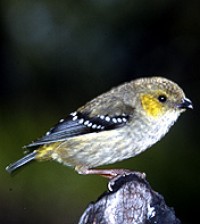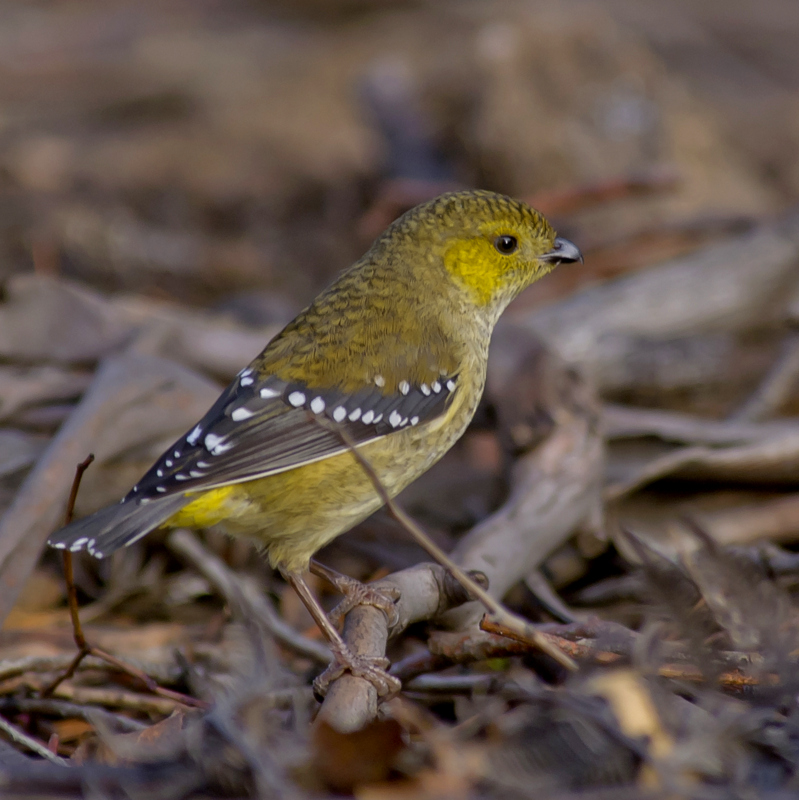
Pardalotus quadragintus
TAXONOMY
Pardalotus quadragintus Gould, 1838, Tasmania.
OTHER COMMON NAMES
English: Golden-rumped diamondbird; French: Pardalote de
Tasmanie; German: Tasmanpanthervogel: Spanish: Pardalote
de Cuarenta Manchas.
PHYSICAL CHARACTERISTICS
3.5–3.9 in (9–10 cm); 0.38 oz (10.7 g). Sexes similar in plumage.
DISTRIBUTION
Restricted to southeastern Tasmanian coastal forests and
woodlands.
HABITAT
Dry sclerophyll forest and woodlands; prefers white gum
(Eucalyptus viminalis).
BEHAVIOR
Nests in loose colonies but forms flocks in winter, often with
other species. Soft two-note call.
FEEDING ECOLOGY AND DIET
Gleans eucalypt foliage and twigs. Forages on a broad spectrum
on invertebrates, but apparently does not take many scale
insects as other pardalotes.
REPRODUCTIVE BIOLOGY
Often nest within 33 ft (10 m) of other nests in loose associations.
The nest is a dome or cup of plant fibers, lined with
grass or feathers, placed in a tree hollow up to 66 ft (20 m)
above the ground. Clutch is three to five white eggs; incubation
period 16 days, with fledging about a month later.
CONSERVATION STATUS
Endangered. Population declined in twentieth century, probably
due to competition with spotted pardalotes (Pardalotus
punctatus). Current population is probably about 3,000 birds in
about six disjunct populations (several on islands). Has been
the focus of a recovery team project. With habitat protection,
population will probably stabilize.
SIGNIFICANCE TO HUMANS
None known.
Photo Gallery of - Forty-spotted pardalote




 Animalia Life
Animalia Life